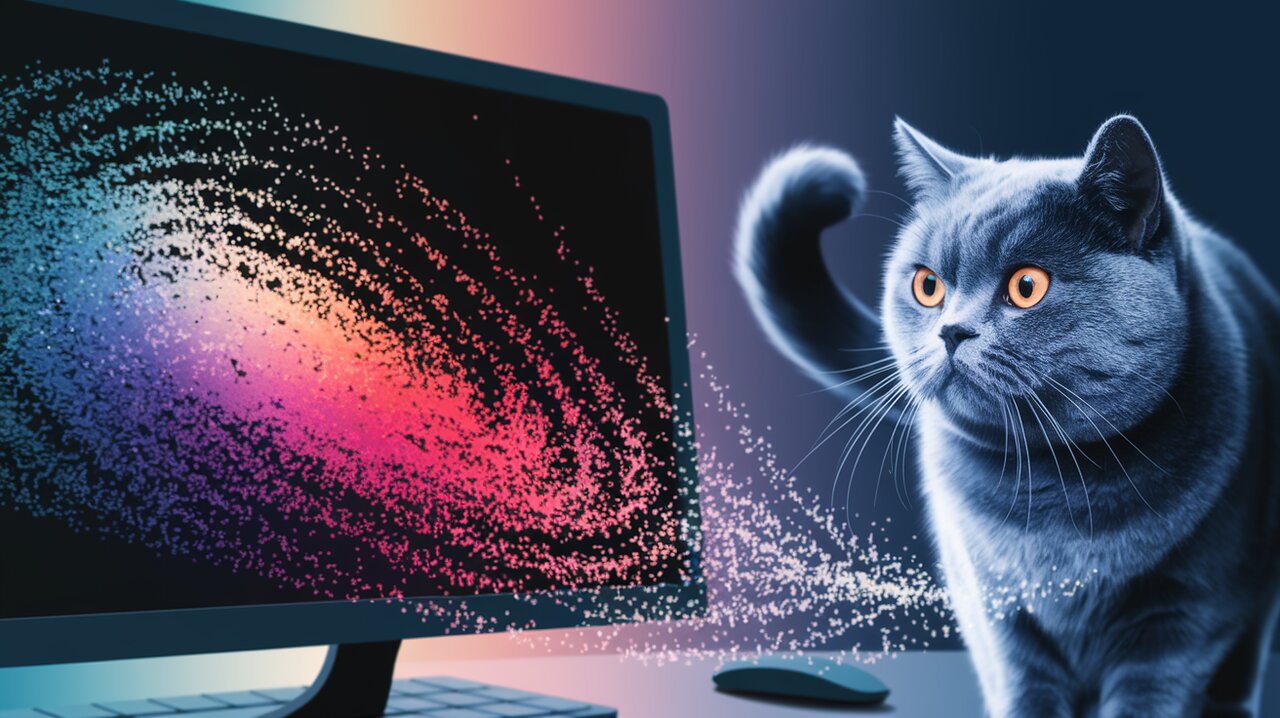
Particle Power: Transforming Images with react-particle-image
In the ever-evolving landscape of web development, visual appeal plays a crucial role in capturing user attention. Enter react-particle-image, a powerful React library that breathes life into static images by transforming them into interactive particle systems. This innovative tool allows developers to create stunning visual effects that respond to user input, adding a layer of engagement and dynamism to web applications.
Unleashing the Power of Particles
react-particle-image offers a range of features that make it a versatile choice for developers looking to enhance their React projects:
- Image-to-particle conversion
- Customizable particle properties
- Interactive force simulations
- Responsive design support
- Performance optimization options
By leveraging these capabilities, you can create eye-catching animations that range from subtle background effects to full-screen interactive experiences.
Getting Started with react-particle-image
To begin your journey into the world of particle animations, you’ll first need to install the library. Open your terminal and run one of the following commands:
npm install --save react-particle-image
# or
yarn add react-particle-image
With the library installed, you’re ready to start creating mesmerizing particle effects in your React applications.
Basic Usage: Your First Particle Image
Let’s dive into a simple example to demonstrate how easy it is to get started with react-particle-image. We’ll create a basic component that transforms an image into blue particles.
import React from 'react';
import ParticleImage, { ParticleOptions } from 'react-particle-image';
const particleOptions: ParticleOptions = {
filter: ({ x, y, image }) => {
const pixel = image.get(x, y);
return pixel.b > 50;
},
color: () => '#61dafb'
};
const SimpleParticleImage: React.FC = () => {
return (
<ParticleImage
src="/path/to/your/image.png"
width={400}
height={400}
scale={0.75}
entropy={20}
maxParticles={4000}
particleOptions={particleOptions}
/>
);
};
export default SimpleParticleImage;
In this example, we’ve defined particleOptions to filter pixels based on their blue value and set all particles to a light blue color. The ParticleImage component then renders our image as an interactive particle system.
Customizing Particle Behavior
One of the strengths of react-particle-image is its flexibility in customizing particle behavior. Let’s explore how we can create more complex and engaging effects.
Dynamic Color and Size
We can make our particle system more visually interesting by varying the color and size of individual particles:
import React from 'react';
import ParticleImage, { ParticleOptions, Vector } from 'react-particle-image';
const advancedParticleOptions: ParticleOptions = {
filter: ({ x, y, image }) => {
const pixel = image.get(x, y);
return pixel.b > 50 && pixel.r < 200;
},
color: ({ x, y, image }) => {
const pixel = image.get(x, y);
return `rgb(${pixel.r}, ${pixel.g}, ${pixel.b})`;
},
radius: () => Math.random() * 1.5 + 0.5,
mass: () => 40,
friction: () => 0.15,
initialPosition: ({ canvasDimensions }) => {
return new Vector(canvasDimensions.width / 2, canvasDimensions.height / 2);
}
};
const AdvancedParticleImage: React.FC = () => {
return (
<ParticleImage
src="/path/to/your/image.png"
width={800}
height={600}
scale={1}
entropy={20}
maxParticles={8000}
particleOptions={advancedParticleOptions}
/>
);
};
export default AdvancedParticleImage;
This configuration creates a more dynamic effect by:
- Filtering particles based on both blue and red color values
- Setting particle colors to match their original image pixels
- Randomizing particle sizes
- Defining mass and friction for more realistic movement
- Setting an initial central position for all particles
Adding Interactivity with Forces
To make our particle system truly engaging, we can add interactive forces that respond to user input. react-particle-image provides a forces module to help achieve this.
Mouse Interaction
Let’s create a disturbance effect that reacts to mouse movement:
import React from 'react';
import ParticleImage, { ParticleOptions, Vector, forces, ParticleForce } from 'react-particle-image';
const interactiveParticleOptions: ParticleOptions = {
// ... (previous options)
};
const motionForce = (x: number, y: number): ParticleForce => {
return forces.disturbance(x, y, 5);
};
const InteractiveParticleImage: React.FC = () => {
return (
<ParticleImage
src="/path/to/your/image.png"
width={800}
height={600}
scale={1}
entropy={20}
maxParticles={8000}
particleOptions={interactiveParticleOptions}
mouseMoveForce={motionForce}
touchMoveForce={motionForce}
backgroundColor="#000000"
/>
);
};
export default InteractiveParticleImage;
The motionForce function creates a disturbance effect centered on the mouse position, causing particles to scatter and then gradually return to their original positions.
Performance Considerations
While react-particle-image is designed to be efficient, working with thousands of particles can be computationally intensive. Here are some tips to optimize performance:
-
Limit particle count: Aim for less than 6000 particles for smooth performance on most devices.
-
Reduce color variety: Particles of the same color are batched during rendering, improving efficiency.
-
Optimize source image: Use lower resolution images to reduce the number of particles generated.
-
Use color rounding: Implement a rounding function to reduce the number of distinct colors:
const roundColor = (value: number) => Math.round(value / 32) * 32;
const optimizedParticleOptions: ParticleOptions = {
color: ({ x, y, image }) => {
const pixel = image.get(x, y);
return `rgb(${roundColor(pixel.r)}, ${roundColor(pixel.g)}, ${roundColor(pixel.b)})`;
},
// ... other options
};
Wrapping Up
react-particle-image opens up a world of creative possibilities for React developers. By transforming static images into dynamic, interactive particle systems, you can create visually stunning effects that captivate users and enhance the overall experience of your web applications.
From simple color filters to complex force simulations, this library provides the tools you need to bring your visual ideas to life. As you experiment with different options and configurations, you’ll discover the full potential of particle-based animations in React.
Remember to balance visual appeal with performance, especially when working with large numbers of particles. With careful optimization and creative use of the library’s features, you can create smooth, engaging animations that work well across a variety of devices.
So go ahead, dive into the particle playground, and start creating mesmerizing visual experiences that will leave your users in awe!
